A FLOOD SMELLS of oil and mold and mud – also shit but you try not to think of that. A heaviness collects at the back of your throat. It stings and crawls up your sinuses then down into your lungs. Breathing can be hard, doubly so if you have asthma. Rubbish is everywhere. A flood does not leave things clean. This is not water as you or I usually know it. It is not pure or pristine or life giving. Living in a city, I never understood water’s power. My first flood I watched it blow out my neighbors’ basement windows. This is not benign. Maybe you know this already.
In cities these forces are controlled. Not here. In my village an oil tank is picked up and dropped down on the corner of Main Street. The water blows out not just basement windows but the plate glass of the supermarket and the building across the street. A CVS collapses. In the village down the road a motel is picked up and swept away with one person left inside. For weeks later you will see smashed siding along the riverbanks as you drive along the highway. The pale blue is the same cerulean color of hope. You inevitably hold your breath. That woman, the one who had been left in it, died.
These are facts. People lose their homes. One village, Prattsville, goes from 600 to 400 residents. Buildings are picked up off their foundations. Some people still can’t afford to rebuild. There’s FEMA housing, yes, trailers like New Orleans. Nearly a year later the village holds a pie auction, pies, yes, to raise money. The trick of FEMA is that you have to be middle class to benefit because they reimburse you. You have to pay out of pocket for the work and then the agency will pay you back. So if you are on the poverty line, as many are here, well, you do not have savings. You do not have money to pay out so that FEMA can take its time paying you back. Instead your neighbors bake pies and auction them off to other neighbors to try and raise money so you can rebuild. Understandably it can feel like the government is out to screw you in situations like this. It can feel like class warfare, like the bureaucracy set up is just to make you suffer.
This is all what a flood brings.
The National Guard moves in. The town is under curfew. The roads are closed. The ones who suffer most are the ones with the least, the ones who have housing in a flood plain. We are told that floods, called “high-water events,” like this will be a regular occurrence. Global warming, weather instability and living in the watershed are all reasons. This is where waters meet, where the Delaware River gets its start and where New York City gets all its water. Tributaries join up, reservoirs are built, and in the mountains the only place to build is in the valleys, which are flood plains. You get the picture. You can do the math.
There have been many responses to this math, but the most surprising, perhaps the most hopeful is in Prattsville. Here, in the town where a few weekends back they held that pie auction to help neighbors rebuild, art is one of the solutions.
Prattsville lost the most in Hurricane Irene. The town became the place everyone saw on the news – like Dave Rikard’s hundred and some year old Victorian home picked up on its foundations and slumped on its side. The town’s homepage includes an Ovid quote that’s testimony to its determination: “Either don’t attempt it, or carry it through to the end.” Drive through the village now and buildings are still spray painted with messages to the government and FEMA. Just last week a house was torn down that had collapsed while its owners watched. Prattsville is about as unlikely a place to find art as you can get.
Even before the flood it was a small town about which you might (wrongly) apply clichés about rural life. It’s poor, but it has Ovid on its homepage. Its heyday was more than a century ago when tanneries stripped bark from hemlocks to tan hides. Until the bark ran out. Appalachia might be the word to describe the town, though Appalachia officially ends at the town’s southern border at Delaware County, my county. Both counties are among the poorest in the state.
“There’s not a lot of self expression here,” Nancy Barton says. It’s more like self-preservation. The art is her idea, and until this spring she chaired NYU’s art department. She is a force of nature herself – blond and wiry with bold cats-eye glasses that rake out at such angles they call to mind the fins on 1950s sedans. She wanted to build an art center as community center where kids could come and do workshops and teens could hang out. There are few places for them nearby. The coffee shop in Windham 11 miles away is the only place open at night. There’s little work and a poor economy. A good job is working for the post office an hour away. Or, you work three jobs to cobble together a living wage. So, kids leave. It’s often the only choice. Her idea though wasn’t to use art to “save” the community or anything like that, but to create a place where art world artists, those making the big-A art could come and have a cultural exchange too. The program would also be a residency program. Unlike typical residencies – remote and monkish, where residents focus on their “work” with all the seriousness that word implies, here it’s more about what happens when both sides meet. Or as she puts it, “I think engaging with interesting folks (and by interesting she means city and rural, artist and local) on a genuine level is way more fun than doing charity.”
Both sides, though, have been wary. The kids largely disappeared with the flood as their families moved away, and locals worried about other people imposing their vision on the town. Artists worried about hostility, and the ones who are gay worried about homophobia – not an unreasonable fear in a country where gay bashing still happens. It was almost like here in Prattsville was the American predicament on a small scale, that red vs. blue, right versus left, where abstractions and ideology and sweeping statements keep us divided. But in practice? Up close? Here they fall apart. The town is a microcosm of possibility. Maybe because when you lose so much what else do you have to lose….
The results have been surprising. That’s not to say anything is perfect. The art center’s building is a wreck – literally. It has no electricity or running water. The flood tore through the back, and because Prattsville is a basin and the waters came with such force, they bounced off and back across the village so the front of some buildings and the backs of others were destroyed. Inside the art center, planks crisscross one story where an entire floor is missing. Seen in one light it’s haunting and suggestive but some of the first resident artists had to decamp across the street to work in the firehouse – no mold.
Someone gave the group the building for a nominal buck a year, and the local church has offered its space; the fire hall its community room, and countless donations of materials have flowed in for the artists and kids to use. For a place that has little, which is still struggling to rebuild, which has pie auctions, the generosity is overwhelming. Someone even donated a collection of pull-tabs from cans. Michelle Petricini, who works at the center says, “They’d been separated into two colors: red and silver. Nothing else. Collecting them was clearly someone’s life’s work.” They also look like an artistic expression in themselves. There are stacks of fabric and string and glue. As Nancy started to see what was coming in, she did some Facebook art history lessons featuring artists who’d used fabric in their work. There was Yayoi Kusama with her show now at the Whitney, and Mike Kelley, an LA artist and friend of Nancy’s who committed suicide earlier this year. For years he’d taken thrift shop finds, blending fabric and craft into a poetry of angst and loss. When the pastor’s wife liked his work on Facebook, Nancy said she just wished she could tell him.
Something interesting was happening; the Catskills’ craft culture was starting to cross with big-A art. David Rimanelli the Art Forum critic was liking pictures on the Prattsville Art Workshop Facebook page. So too were teen girls in town. And, the resident artists included those on the global tour of up-and-coming important artists like Alex McQuilkin and Nadja Marcin, a German video artist who wanted to look at the landscape and Thomas Cole paintings.
The teenagers came out slowly. One, Alexis Marsh paired bows and ribbons and leopard prints, turning them almost into a comment on femininity. Other girls tied a bow of netting and squares of fabric onto the wall, and on Facebook Nancy posted pictures of Kelley’s work tagged with the girls’ names. His ghost seemed to hover over it all. James Woodward, one of the artists in residence, described how the girls began to cut, glue and pin pieces to the walls. “It was a far cry from the traditional painting they were expecting,” he says. “Mike Kelley would have been proud.”
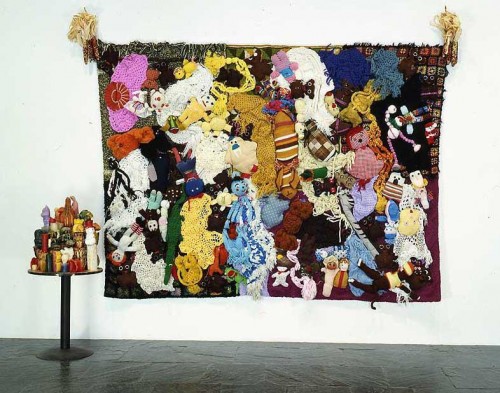
Mike Kelley's More Love Hours Than Can Ever Be Repaid. On Facebook and at the Whitney and hanging over Prattsville as a guiding spirit.
Kelley had played in bands and pursued collaborations and work that didn’t always seem like Art but that took craft and made something high, something conceptual out of the low. It didn’t aim at artfulness but found meaning in loss and alienation just as he found stuff from thrift shops and yard sales and reconstituted them into assemblages. Nancy posted his famous piece “More Love Hours Than Can Ever Be Repaid” on Facebook, and it seemed remade in the work Ashleigh Jaeger and Lacey Brand did. The girls spray-painted their names in bright fluorescent pink on an old embroidered pillowcase. Of course, I’m reading into this, adding my layers of interpretation but that’s what critics do, and in the wavering paint and the struggle to make out their names as well as the very color pink, which is both safety bold and teen-girl popular, the piece seems to say, Yes, after a year we’re still here. Plus, there’s that essential part of graffiti, which is to mark something, to make your mark on something to say, I was here.
When Mike Kelley died, he was in the process of remaking his childhood home. He grew up working class in Detroit, struggling, like the kids of Prattsville – and in a modest ranch house like many of trailer homes around Prattsville. He wanted the building to serve its community hosting blood drives and giving free haircuts – and to take his home on the road to talk about conceptual art to high school kids. Now it feels almost like he’s brought it to Prattsville. It also makes me think of Richard Prince’s Second Home, an actual tract house he bought and kept as is, as a work of art with his own art inside. Donated to the Guggenheim, the house wasn’t far from Prattsville. The piece was going to be open to the public until it got hit by lightning. Still, it and Kelley’s work suggests a place where the experiences in Prattsville are valid and validated. Or, as James puts it, “Like the art center is striving to throw away our traditional, old fashioned notions of what art should be and showing the people here in this small town that art is relative and transient and open for experimentation.”
Ashleigh, Lacey and Alexis have managed to catapult over what you usually find in the Catskills with hobbyist artists, weekenders and watercolorists, that is to say a kind of realism tied to the landscape. Many of the resident artists have also found their notions of art challenged. Being in Prattsville has made them rethink what they’re doing in relation to the art world– or who the audience for their work is and why art matters. One of them, Damien Davis describes how “surreal” the pie auction was. “As an artist, the image an auction conjures up isn’t selling pies to rebuild someone’s home. For me, being here tells me exactly where I need to shift my attention.”
Michelle, though, is perhaps the best example of both the workshops and the town. She found out about the center when someone reposted something about it on her Facebook page, saying, “How ridiculous is that?” Instead Michelle sent a message asking to get involved. She majored in studio art in college but has spent the last decade plus trying to pay off student loans that only seem to grow while her connection to art has waned. She started a graduate program to try and at least teach art in the schools, then realized the program wasn’t even going to give her the skills she needed. Now she lives around the corner from the Workshop’s building; her mom owns the restaurant down the street, and that house that everyone saw in the news, the beautiful Victorian thrown off its foundation? That is her uncle’s home.
No part of her family was unscathed in Irene. Other relatives lost places in Prattsville; another uncle lived in my village until his house was flooded too. He’s still waiting for his FEMA buyout. His kids, her cousins, were flooded in Schoharie, and not realizing he was flooded out too, they couldn’t find their dad, her uncle, because he’d been evacuated to the fire hall, which was serving as a Red Cross shelter. I’ve probably missed out details here, like Michelle’s own home where she feels “lucky” because she and her husband had only bought it the month before, and the flood only knocked the soil out from under the foundation.
Nancy had money from NYU in her budget to pay Michelle. She’s been the program’s admin and ambassador, translating and explaining both sides to the other, but more than that has been making her own work too, creating fabric installations from donated materials and embroidery hoops. She talks about her process and working with ideas of home and mud, using birdhouses and clay, and I think of nothing so much as Rayyane Tabet’s piece in the New Museum’s Triennial, rebuilding his bedroom in Beirut from sagging canvas to address notions of home and destruction, Beirut and war. As the artists in residence push Michelle to develop her work and say to her, “Have you tried this, did you do that?” she talks about feeling like an artist again.
Michelle isn’t just making art but challenging the art world. Nancy told one New York curator about Michelle, and he said, “Who’d have thought you’d find a person like that there?” But, that just goes to the stereotypes a place like Prattsville Arts Workshops can break down. “People upstate,” Nancy says “don’t conform to a New York City picture of success, but that doesn’t mean their work or ideas aren’t as important as someone in the city – or even more so.”
When Damien came up, he wasn’t sure what he’d find. Being gay and African-American, he worried about being judged – or worse. He spent his time working with the kids, including Michelle’s four year-old son. For his piece for the open studios, Damien is making teddy bears out of a quasi-African print fabric he created. The pieces look at a mash-up of identities, and as much as any other work here seems to be visited by Mike Kelley’s ghost. Damien’s mother taught home ec, and quilting, sewing and cooking were all part of his childhood, just like they’re part of life in Prattsville. Growing up in Louisiana with family still there, he also knows all about rebuilding in the face of disaster. There is something else in the piece though, something he isn’t quite saying when we speak on the phone. It’s in the teddy bears. They’re weighted with complex issues of identity but one element is missing – his own blackness and how he might change his behavior to seem less threatening, as if he were the teddy bear himself. He sighs with relief when I ask and talks about how he did that here in Prattsville. “In the city,” he says, “I channel my inner white woman to hail a cab, and people cross the street to avoid me in the middle of the night.” Only just the opposite happened in Prattsville.
Desmond, Michelle’s son, named two of his stuffed animals after James and Damien, both gay men. That’s how much working with them meant to the boy, and how little anyone cared that they were gay and in Damien’s case also black. But, Desmond’s naming the stuffed animals seems to double the layers of meaning in Damien’s piece, with its teddy bears and issues of perception and identity. Damien had no idea though that the four-year old had done this. On the phone when I tell him, there’s a catch in his voice. “Really?” he says. He can’t quite believe it. He came to Prattsville, in part, he explains, “Because when I was growing up someone telling me I could be an artist meant the world to me.” Clearly it does to Michelle’s son too. What’s even more amazing is her pride in her son as she tells me about the stuffed toys. She’s not scared that her four-year old is naming stuffed his animals for gay men. In fact she doesn’t say anything about whether they’re gay or straight or black or white. What matters are the experiences they’ve all had and shared with art in a town a year ago many would have left for lost.
This Sunday as part of MudFest (which features a greased pig competition) Prattsville Art Workshops is having an exhibit of work including Alex McQuilkin, Jonathan Wang, Marisa Mandler, Nadja Marcin, Paco Marcial, Damien Davis, Carrie Pollock, James Woodward, Nancy Barton as well as Ashleigh, Lacey, Alexis and Michelle Petricini.)

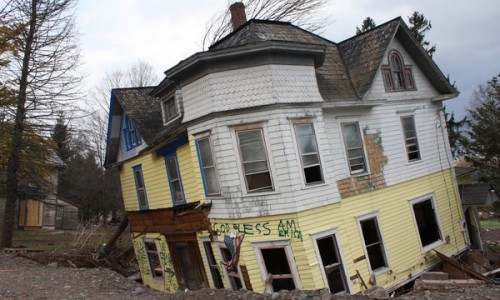

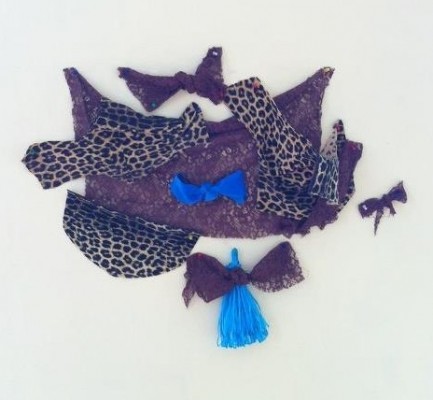
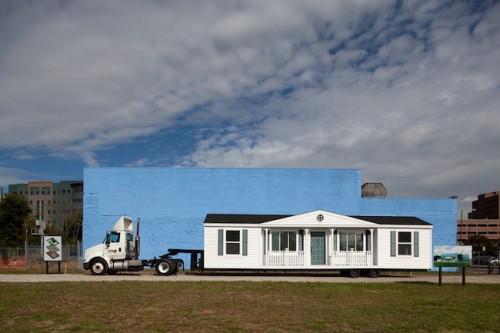
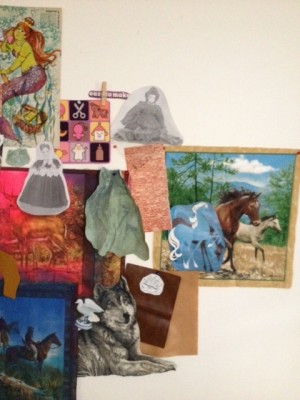
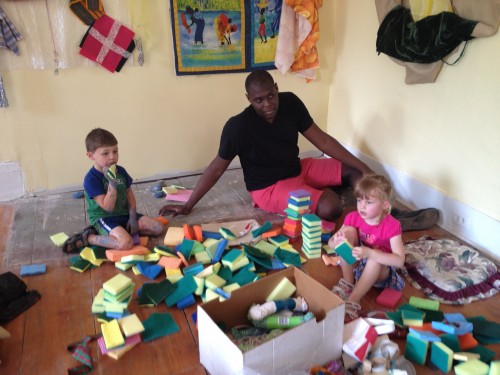


I’m Michelle’s Mom in law and Desmond’s grandma. I couldn’t be prouder of all the hard work they have done to make this Art Shop happen and all the hardships they have had to endure to get to this place in time. It’s hard loosing all your friends and some family members to a flood and still forge foward with a positive additude. I cry many times just passing through this town remembering the past 30 years I’ve lived here. The people in this town deserve much honor for they are truely the Heros of the Great Flood of Prattsville and I salute them. May God Bless them All always. Sara Petricini
It’s been amazing to see what everyone’s done in Prattsville. I can’t say how inspiring I find it — Michelle especially. You should be proud.
Lovely piece, Jennifer.
Mark, thank you. That means a great deal to me…